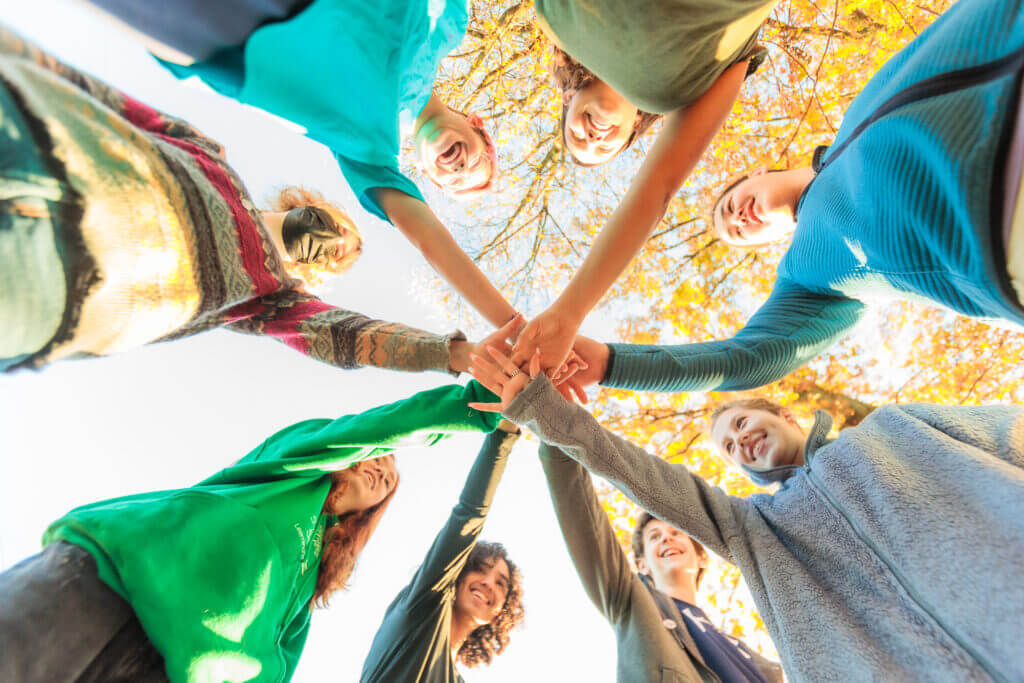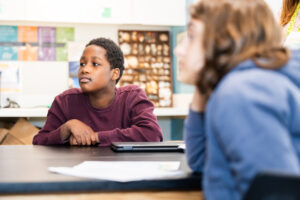Redefining the Purpose of Education

What Has Been the Purpose of Education?
Our education system is outdated and has been running on autopilot for quite some time. While we have amazing teachers throughout our community, our larger education system is antiquated. The continued educational repercussions of the pandemic have forced parents and educators to face concerns about student learning and regression. We have had to pause and reflect on what is working, what’s not, and how we update our approach to education.
The Los Angeles Times released an editorial last year that reflected on the state of education: “Schools have stuck to an outdated system that relies heavily on students’ compliance — completing homework, behaving in class, meeting deadlines and correctly answering questions on a one-time test — as a proxy for learning, rather than measuring the learning itself.”
The focus of education has been on the end result versus the learning process, and we have started to see the negative effects this has had on students.
How Can We Redefine This Purpose?
So, what should 21st-century learning look like?
At The Sycamore School, we think learning should be engaging, purposeful, and fun.
1. Mastery-Based Learning
The LA Times editorial describes what learning SHOULD be, “assessing the skills and knowledge students gained and how well they think… students receive specific information about their progress and what they need to do to move forward. This system transfers more of the responsibility for learning to the student.”
Mastery is not about how quickly you understand a concept or your level of compliance; it’s about encouraging persistence, resilience, and problem-solving. It doesn’t matter if it takes a student a shorter or longer amount of time to understand a concept, but rather that the student does indeed grasp the concept before they move forward. Extolling the value of accelerated learning does students a disservice. We have a generation of students who have been rushed through the mainstream math curricula and, as a result, retain little to nothing of what they supposedly learned. Slowing down to embrace and enjoy the learning process and its application versus working for a grade breaks the cycle of failure avoidance.
For more information on what this looks like in action, read our blog post about the benefits this has for high school students.
2. Teacher-Student Relationship
At the crux of mastery-based learning is a positive teacher-student relationship. Teachers must first create a safe and nurturing environment where students feel seen and understood. Teachers determine how each student learns best and set them up for success by offering choices and adjusting the task to the learner for that just-right challenge. For learning to be self-paced and flexible, a smaller teacher-to-student ratio is needed.

When introducing Mastery-based learning to students, we must teach them to value new skills such as taking chances and failing, viewing feedback as a learning tool versus criticism, and the value of a productive struggle. Mistakes are valued and encouraged. Today’s students have been taught that rote memorization and cramming for a test are valuable skills. Instead, we want to help students think for themselves to solve problems that may not yet exist. We want students to recognize that learning is purposeful, messy, and not linear. We want to give them the space and time to think outside the box; they can try something new, and if it doesn’t work, try something else. We need to push back against perfectionism and normalize failure.
Instead, we need to help students learn from their mistakes. There is value in receiving feedback, redoing a paper, and then turning it in again. That is how we learn — receiving feedback and then revising our work accordingly. This can be applied to so many areas. For example, if a student doesn’t make the school’s basketball team, what could they do to improve their chances next time? Maybe they practice their layups, run regularly, or join a rec team to improve their skills. There is value in a task being hard and students learning how to work through challenges to discover a solution for themselves.
3. Executive Functioning Skills
Executive Functioning Skills are all the skills needed to engage in goal-directed behavior. They include flexible thinking, perspective-taking, time management, focused attention, goal setting, and keeping track of materials. Many students struggle in this area, especially children with ADD/ADHD and ASD. At TSS, we explicitly teach executive functioning skills within and across our classes. We have routines in common across classes to help students internalize those routines. Within our classes, we scaffold long-term projects into smaller chunks and give individualized support to students, depending on their needs. While a timer may work for one student, it could stress another student out. Pushing past the “one-size-fits-all” mentality provides the most individual growth.
4. Social-Emotional
At TSS, we also explicitly teach social-emotional skills within and across classes. These skills include self-awareness, cause and effect, respect for others, perspective-taking, reflection, problem-solving, social skills, making repairs to friendships, and conflict resolution. We recognize that students will misspeak, hurt each other’s feelings, and engage in behaviors without thinking. These mistakes are learning opportunities. Mindfulness is also a key skill related to emotional regulation that we explicitly teach in our Movement & Mindfulness classes and prompt for in our other classes. We believe that every student should be supported and explicitly taught social-emotional skills alongside academic skills. If not, students aren’t able to recognize when they are dysregulated and unavailable for learning.
By teaching social-emotional skills in real time, students can more effectively engage with their teachers and peers. There are so many teachable moments in real-time, throughout the day, to support students in their social-emotional skill development. Group projects offer the opportunity to practice compromising, considering different points of view, engaging in less preferred tasks, and flexibility. Discussing the traits of a good leader and a good team member can help students recognize the value of their role in a group. Beyond high school, we have hopefully given our students the tools to collaborate successfully, communicate, and navigate adult relationships.
5. Daily Movement
Many of our students (and staff) need to move throughout the day to be alert and engaged in their learning. To address this, we offer movement breaks throughout the day. In addition to these breaks, students have almost an hour for lunch and outside time and an hour for their Movement & Mindfulness class. We also strive to have a balance of technology and hands-on activities. Technology can be a great learning tool, but so can actively creating something by hand. We have many opportunities for students to move within classes, whether it be electives such as theater or art or engaging in a hands-on activity in their experience or math class; we can find ways for students to move throughout the day in every class.
6. Community-Based Learning
At TSS, we want students to understand the utility or purpose of their learning. Our Fridays are dedicated to Community-based learning, where students go into their community for field trips and community service outings. I have often witnessed students being their best selves when we connect them with their community. Every Friday is different and could be any combination of activities, including a trip to a museum, nature center, senior living facility, or a team-building outing, to an escape room; immersing students in their communities helps them actively apply their learning and social skills.
One of the foundational aspects of mastery-based learning is giving students a place and space to apply what they’ve learned to real-world experiences. Our Friday activities ensure that our students have regular opportunities to apply their skills.
How Can We Support A Better Purpose of Education?
We need to put the responsibility of learning back on our students while also giving them the tools they need to practice, struggle, and succeed. We need to be straight with our students and let them know if they’ve mastered a skill or still need to work on it. Unearned praise or grades based on compliance aren’t teaching students the skills they need to be independent adults who can think and do for themselves. The focus of education should be preparing our youth to be independent adults who can thrive and contribute positively to their community. At TSS, we also want our students to become lifelong learners who are self-aware, can advocate for themselves, and solve problems that don’t yet exist. Focusing on academic skills, executive functioning skills, and social-emotional skills gives our students the tools they need to be successful both now and in the future.
Posted in:

